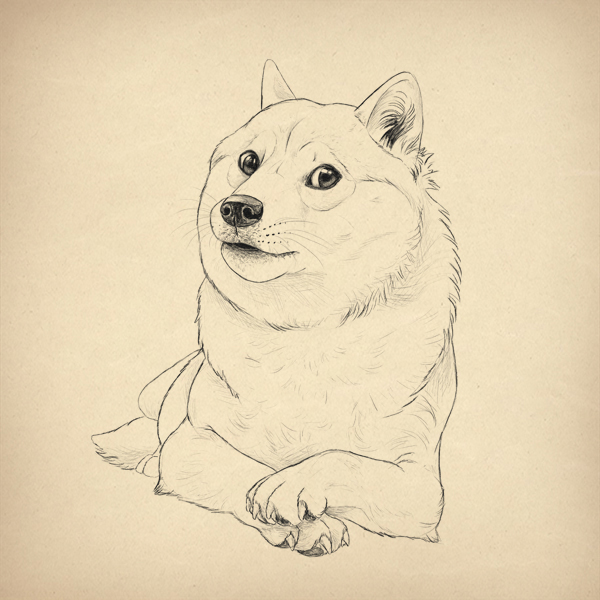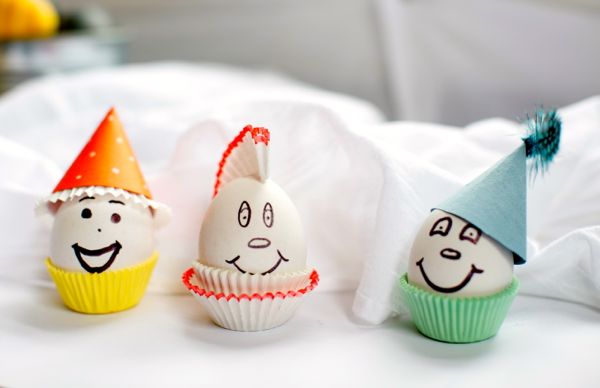
1. Define the Head Proportions
Step 1
Start with a circle. And when I say "a circle", I don't mean a perfect shape drawn with calipers (having problems with drawing a circle?). Draw it very lightly—it's just a guide line and we're not going to need it after it's used.
Step 2
Draw a cross inside the circle. Again, do it softly and don't worry about using a ruler.
Step 3
"Rotate" the cross as shown below.
Step 4
Draw another circle, using the cross lines as your guide.
Step 5
Inside the circle you've just drawn, add two identical, overlapping circles.
Step 6
Add a third circle, as shown in the image below. The third circle should be the same size as the two smaller circles, and intersect them both evenly.
Step 7
The base for the snout is done! You can now press your pencil harder and draw the outlines.
Step 8
Add the nose.
Step 9
The nose and mouth are sketched out, so let's start the forehead now. We need to return to sketching very lightly, so that you can remove these lines later. Draw a big circle on the mouth, as if doge tried to balance a ball.
Step 10
Divide the circle into four parts, as shown in the image below.
Step 11
Divide the lower half into two halves.
Step 12
We need to connect the forehead with the snout now.
Step 13
Add some more structured lines.
Step 14
Now we have enough guide lines to place the eyes.
Step 15
Sketch the eyes, but don't darken them yet. We'll add details to them later.
Step 16
Draw panda patches around the eyes.
Step 17
Let's outline the head now.

Step 18
Add pointed ears to doge's head.
Step 19
Add some finishing touches to the shape of doge's face.
Step 20
The sketch is done! If you want, you can stop here and use a thick marker to stress the defined outlines, for a finished sketch. But if you go further, I can show you how to draw a realistic doge!
2. Add the Details
Step 1: Eyes
Eyes of doge should be dark and shiny at the same time, with eyelids that have dark e. Leave a bit of white space for a staring look.





Step 2: Nose
If you want to learn some more about drawing a dog's nose, why not try my "How to Draw Dogs and Wolves" tutorial.





Step 3: Mouth
Doge has black lips, cute thin whiskers and a dark and slightly open mouth.




Step 4: Ears
Add a lot of fluffy fur inside the ear!



Step 5: Shading
Simple, short lines are good to simulate fur. Draw them thickly where you want to add shade.


3. Draw the Body
Step 1
We can now add the rest of the body. Doge looks quite stocky in this perspective, so it's going to be easy to build his body out of simple shapes.First, attach a big circle to the head. This will be the neck.

Step 2
We need to find out where the paws are going to lay. Draw a simple triangle starting in the center of the circle you drew in the previous step.
Step 3
Let's build the legs out of a few circles.
Step 4
You can now outline the basic shape of the body.
Step 5
Add the paws. Want to know why they look like this?

Step 6
Outline the paws.
Step 7
Doge paws are quite a complicated structure. We need to define "claw covers", for example.
Step 8
Here come the claws!
Step 9
Draw the rest of the body. Don't stress it too much, it's the least important part of the picture.



Step 10
The body is fully sketched now. Just a few more steps for a finished doge!
4. Final Touches
Step 1
Use short, fast lines to draw tiny hairs at the fingers of the paws. Also, draw dark pads under the claws.
Step 2
Define the outlines of the legs with short, messy lines.
Step 3
Shade the legs with simple lines.
Step 4
Time for some final shading!
Step 5
You can stress some of the outlines to make them stand out more.
Step 6
Use an eraser to carefully clean up the picture. Even if you were drawing digitally, it's good to keep some of the guide lines for a natural, sketchy effect.













